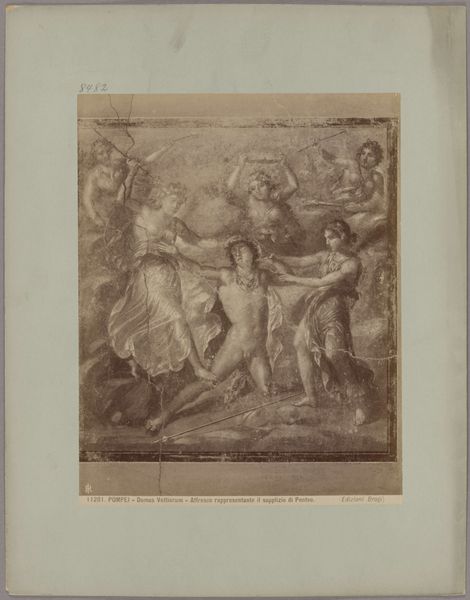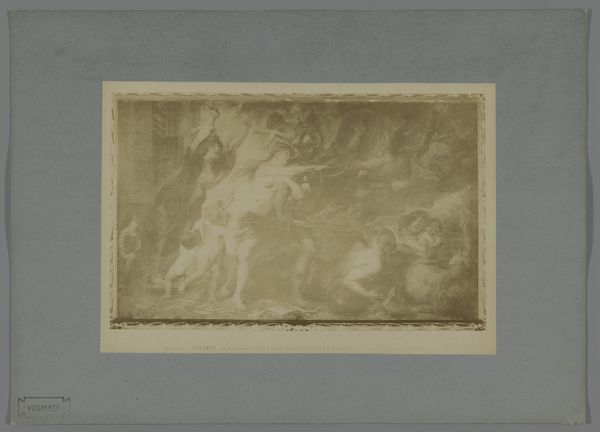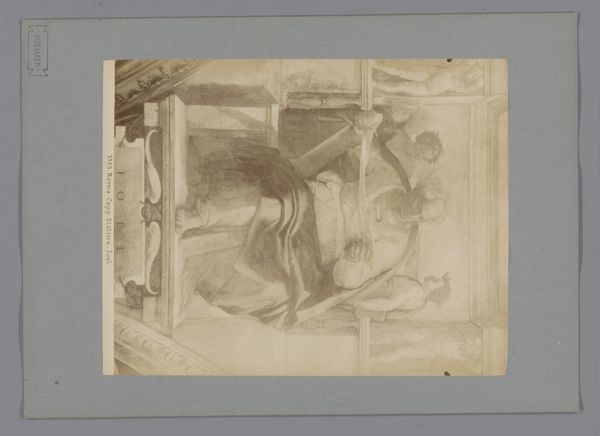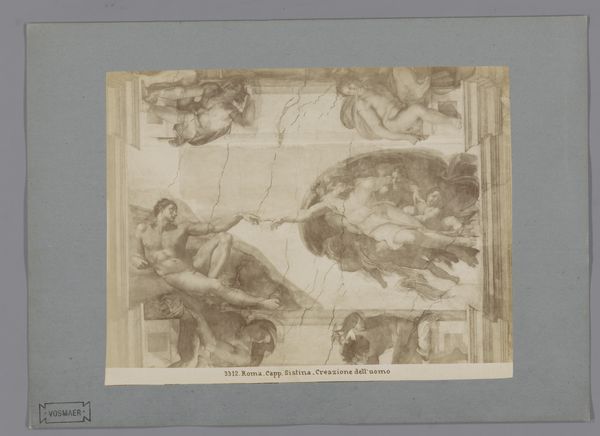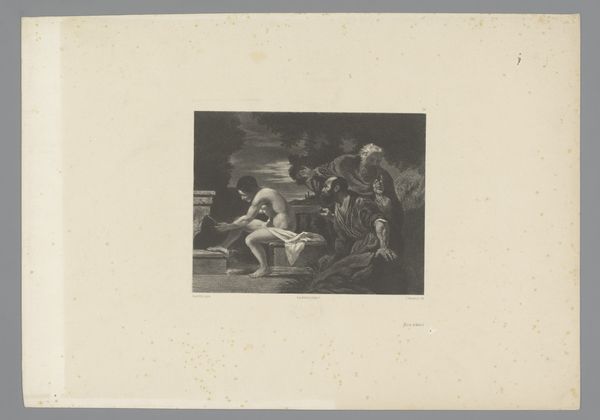
Fotoreproductie van het fresco De schepping van de vrouw door Michelangelo in de Sixtijnse kapel 1851 - 1900
0:00
0:00
print, fresco, photography
# print
#
fresco
#
photography
#
history-painting
#
italian-renaissance
#
nude
Dimensions: height 200 mm, width 258 mm, height 258 mm, width 358 mm
Copyright: Rijks Museum: Open Domain
Editor: So this is a photograph of Michelangelo's fresco, *The Creation of Woman*, which is part of the Sistine Chapel ceiling. The print itself dates from between 1851 and 1900. It’s interesting seeing such a famous painting reproduced as a photographic print. What are your initial thoughts on this reproduction? Curator: Well, as a reproduction, we must consider the materiality. The transition from fresco to photographic print is significant. Fresco, by its nature, involves the direct application of pigment to wet plaster – a labor-intensive, site-specific process. The photograph, by contrast, allows for mass production and dissemination, effectively commodifying Michelangelo's original work. The photographic process, the chemicals involved, the paper type… These all speak to a different set of social and economic circumstances. Editor: That's a great point about the change in process and labour. Does focusing on materiality diminish the original artwork's artistic merit? Curator: Not at all. Examining the reproduction invites a consideration of the power dynamics at play. Who commissioned the photograph? For what purpose? How was it circulated? The reproductive process isn't a neutral act. It influences the work's meaning and accessibility, reflecting shifting cultural values surrounding art and consumption. The print facilitates the rise of art history as a discipline and makes the work accessible, if only as a shadow of the real. Editor: So the reproduction tells us about how art was consumed and distributed in the 19th century, as opposed to the Renaissance? Curator: Exactly. It reflects a new mode of engagement, transforming Michelangelo's masterpiece from a sacred, site-specific experience to a portable, reproducible object – a sign of industrialization and new technologies' role in cultural dissemination. Editor: That's a really insightful way of looking at it. I guess I hadn't thought about how the act of reproducing the art changes its meaning so much. Curator: Considering materiality provides a critical lens for understanding an artwork’s role within broader social and economic structures. We shouldn't think only about authorship and style.
Comments
No comments
Be the first to comment and join the conversation on the ultimate creative platform.


